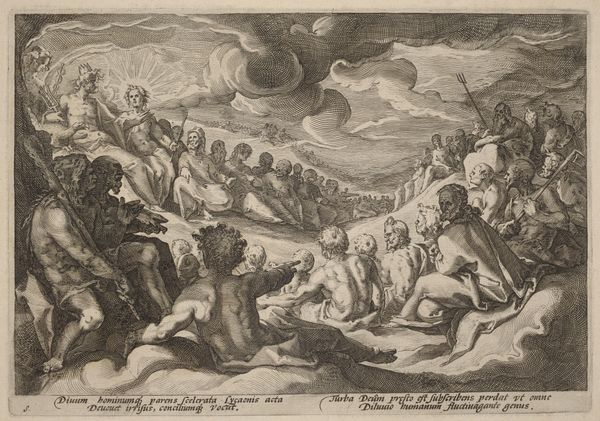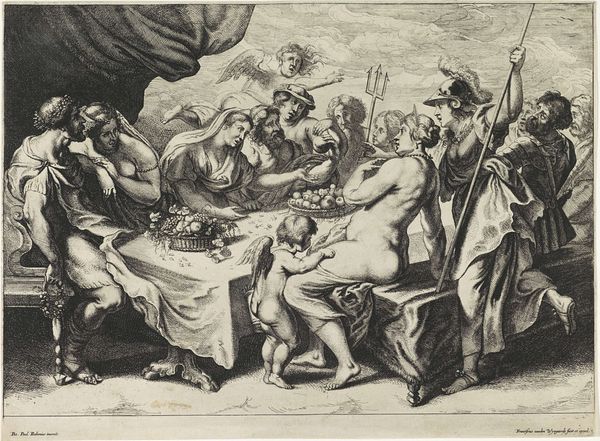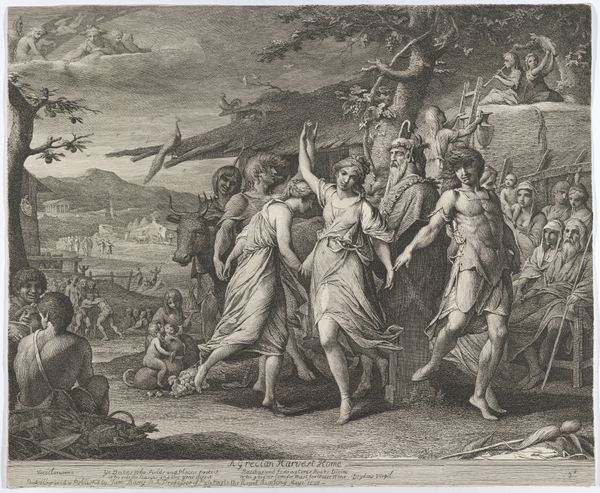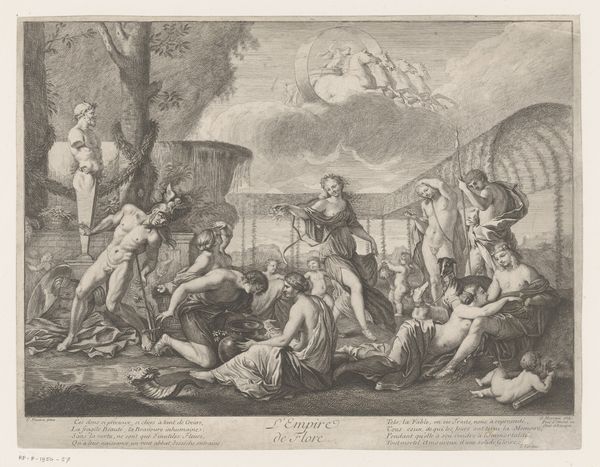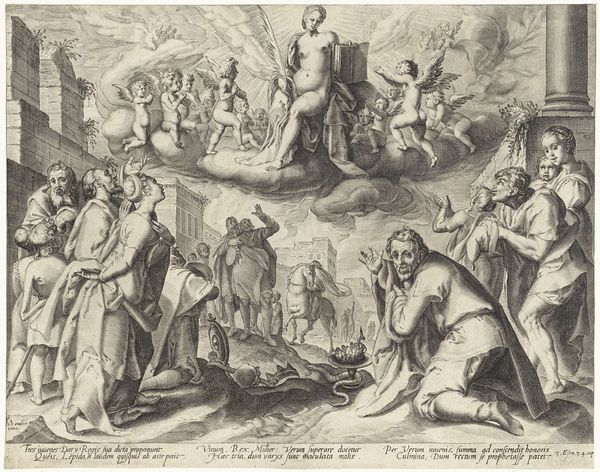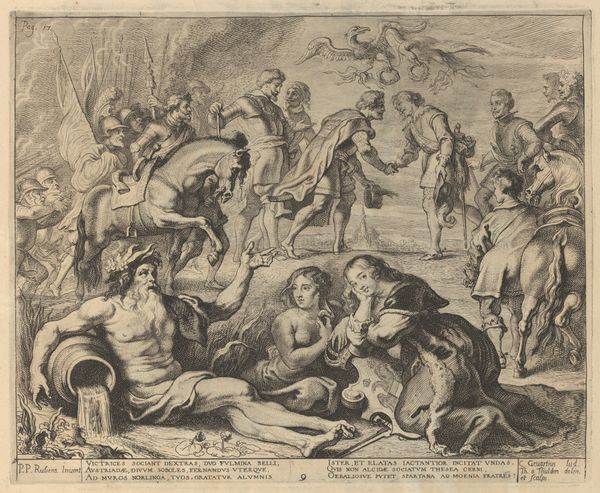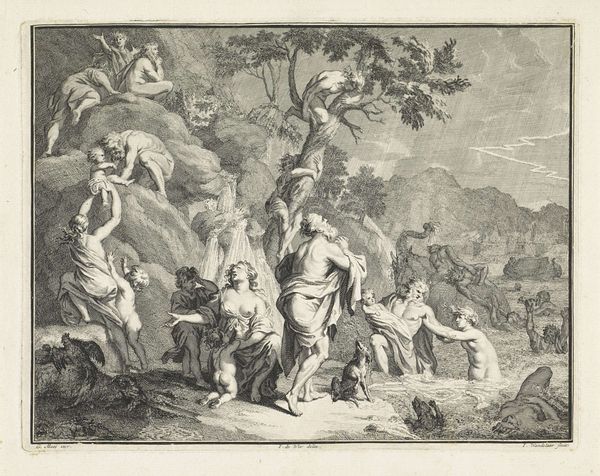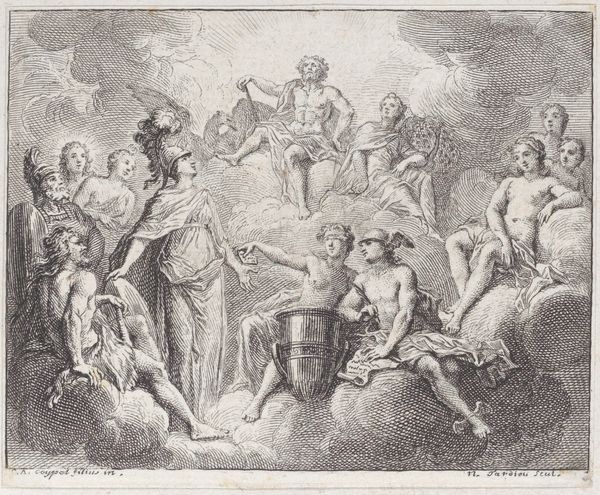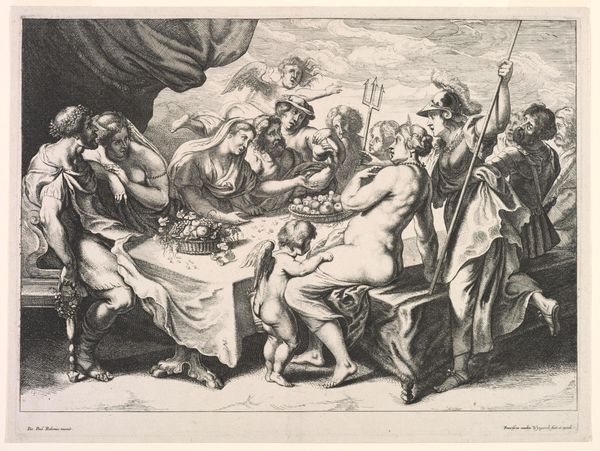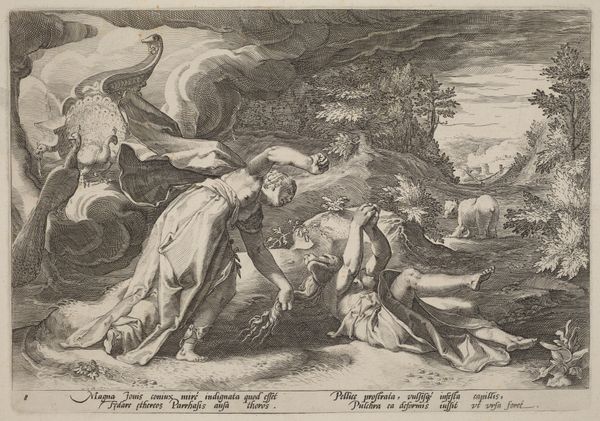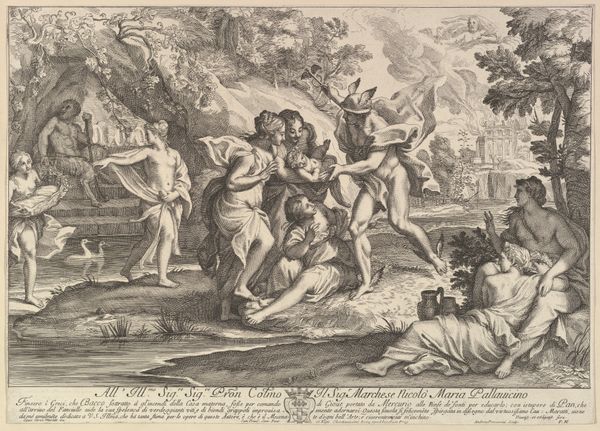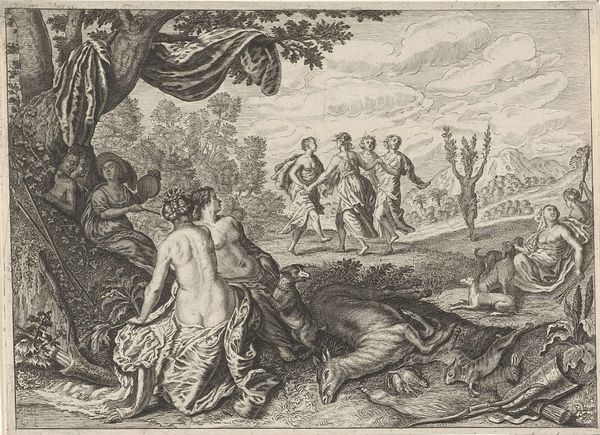
Jupiter and the Gods Asking Helios to Resume Control of the Chariot 1589
0:00
0:00
print, engraving
#
allegory
# print
#
mannerism
#
figuration
#
history-painting
#
northern-renaissance
#
engraving
Dimensions: plate: 18.5 x 26 cm (7 5/16 x 10 1/4 in.) sheet: 26 x 34.5 cm (10 1/4 x 13 9/16 in.)
Copyright: National Gallery of Art: CC0 1.0
Editor: Hendrick Goltzius's 1589 engraving, "Jupiter and the Gods Asking Helios to Resume Control of the Chariot," it's incredibly detailed. It strikes me as a political tableau, almost like a negotiation is unfolding. What do you make of this composition, given the context of the time it was created? Curator: It is a negotiation of sorts, just one conducted in the symbolic language of the period. Goltzius was working during a time of significant political and religious upheaval in the Netherlands. Printmaking allowed for the wide dissemination of imagery, shaping public opinion and even serving as propaganda. Note how Jupiter is central but looks vulnerable to public and divine opinions in ways monarchs and potentates felt in the Reformation and post-Reformation eras. Editor: Propaganda? I didn’t realize prints could have such a strong public role. Curator: Absolutely. Think about the power of disseminating classical narratives with implied or direct commentaries on current events. The positioning of figures, the expressions on their faces - were these elements designed to criticize the governance and divine mandate? The way Helios almost seems defiant—do you think that choice impacts the message being sent? Editor: Now that you mention it, Helios *does* look a bit resistant, which undermines the whole idea of divinely-ordained rule, doesn’t it? Was this piece directly challenging a particular authority? Curator: It's more subtle than a direct attack. Artists in this period often worked with allegory to offer commentary while avoiding direct censure. The point is not whether this particular piece undermined that system in a literal way but rather the potential for artwork to subtly participate in public life during this era. Did it shift perspectives even slightly, or give a vocabulary to voice one's opposition? Editor: So, looking beyond just the figures themselves, you are saying the social impact and use of prints for sharing perspectives matters more than finding the one "true" meaning the artist had in mind? Curator: Precisely. Goltzius gave us more than a beautiful engraving; he left us a cultural document to dissect. The narrative on power and the influence the piece might have wielded. Editor: I’m starting to appreciate how an image could become a player on a much larger political and social stage back then. Thank you!
Comments
No comments
Be the first to comment and join the conversation on the ultimate creative platform.
